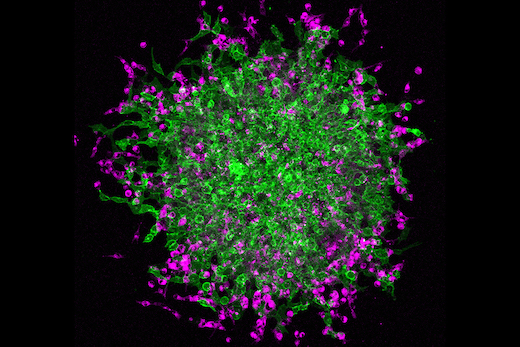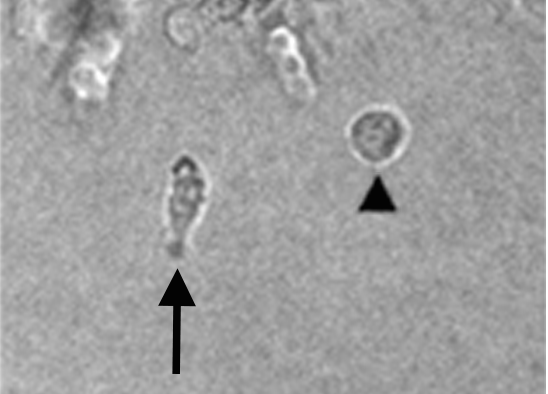What does it take to be a leader – of cancer cells?
Adam Marcus and colleagues at Winship Cancer Institute are back, with an analysis of mutations that drive metastatic behavior among groups of lung cancer cells. The findings were published this week on the cover of Journal of Cell Science, and suggest pharmacological strategies to intervene against or prevent metastasis.
Marcus and former graduate student Jessica Konen previously developed a technique for selectively labeling “leader” or “follower” lung cancer cells in culture, using lasers that turn a fluorescent protein from green to red. The leaders are more adventurous and invasive, but the followers support the leaders and help them survive. Check out our prize-winning video and their 2017 Nature Communications paper.

The magenta cells have leader-specific mutated Arp3 protein, while the green cells are unmodified followers.
The new research harnesses their technique to track the mutations that are specific to leader or follower cells. It was a collaboration with the lab of Paula Vertino, formerly at Winship and now at University of Rochester. Cancer Biology graduate students Elizabeth Zoeller and Brian Pedro led the work, with sophisticated genomics from Ben Barwick.
One of the leader-specific mutations was in Arp3, part of a protein complex that promotes the protrusion of cellular blobs, facilitating migration. The researchers took the mutated Arp3 protein from leader cells and forced its production in follower cells. In the cover image, the magenta cells on the outside are the ones with the mutated Arp3 protein, while the green cells are unmodified. Read more





